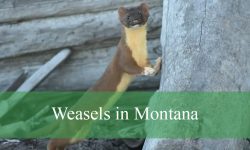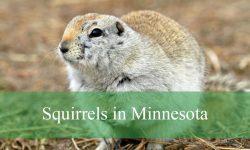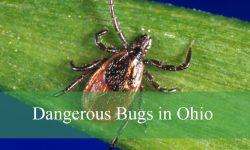Skunks are easily recognized mammals across North America, and Indiana offers them a suitable environment to thrive. Known for their bold black-and-white markings and their ability to release a pungent spray as a defense mechanism, skunks play a vital role in the ecosystem by controlling insect and rodent populations. In Indiana, there are two primary types of skunks that residents may encounter, and learning how to identify them is valuable for both wildlife enthusiasts and homeowners.
While many people focus only on the smell, skunks are fascinating creatures with unique behaviors and adaptations that help them thrive in different environments across the state. From farmlands to forest edges and even suburban areas, these animals have adapted remarkably well. Their nocturnal habits make them elusive during the day, but careful observation at dusk or dawn often provides glimpses of their movements.
This guide will cover the two types of skunks in Indiana in detail, including their characteristics, behavior, and preferred habitats. By understanding these mammals, you can learn how to coexist with them while appreciating their ecological importance. Let’s explore both the Striped Skunk and the Eastern Spotted Skunk in Indiana.
Understanding Skunks in Indiana
Skunks belong to the family Mephitidae, which includes several species across North and South America. Indiana, however, is home to just two: the Striped Skunk and the Eastern Spotted Skunk. These species share some common traits, such as their ability to spray, but they also have distinct differences in appearance, distribution, and behavior.
Both species have a remarkable tolerance for varied climates, making Indiana’s mix of woodlands, prairies, and agricultural landscapes ideal for survival. Skunks are omnivores, feeding on insects, small vertebrates, plants, and even human garbage when accessible. Their adaptable diet allows them to persist in both rural and urban areas.
Despite their reputation, skunks are not aggressive by nature. They typically prefer to avoid conflict, only using their spray as a last resort when threatened. This makes them far more peaceful than most people realize, although caution is still necessary when encountering them in the wild.
Striped Skunk in Indiana
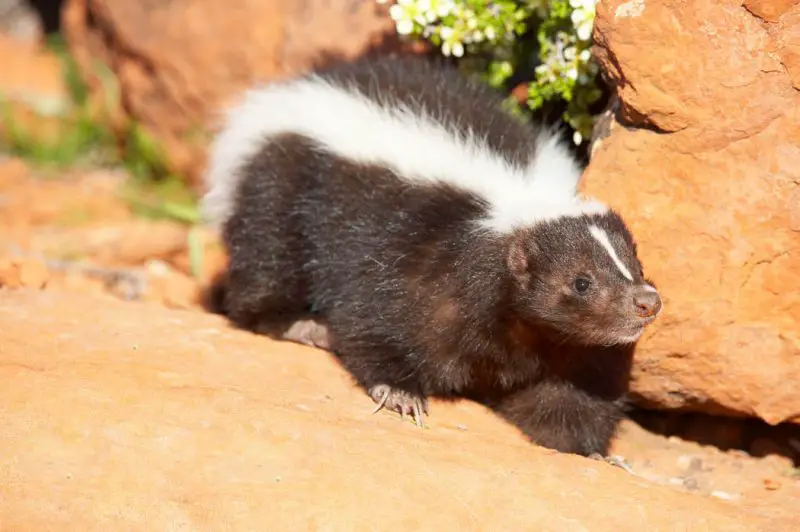
Characteristics of the Striped Skunk
The Striped Skunk (Mephitis mephitis) is the most common and widespread skunk in Indiana. It is easily identified by its bold white stripe that starts from the top of the head and runs down the back, often dividing into two stripes across the body. Adults usually weigh between 4 and 10 pounds and have a body length of 18 to 25 inches, including a bushy tail.
Their fur is thick and glossy, and while black-and-white is the most common pattern, variations in stripe width and length occur. Some striped skunks may have a thinner stripe, while others may appear almost completely white along the back. Despite these differences, the species is usually easy to distinguish from other mammals in the region.
Skunks have small, rounded ears, sharp claws adapted for digging, and short legs that give them a waddling gait. While their vision is relatively poor, they rely heavily on their sense of smell and hearing to detect food and danger in their surroundings.
Behavior of the Striped Skunk
The striped skunk is nocturnal, spending the daylight hours resting in burrows, hollow logs, or abandoned dens created by other animals. At night, it emerges to forage, often covering several miles in search of food. Skunks are opportunistic feeders, consuming insects, small mammals, eggs, fruits, grains, and even garbage when available.
They are solitary creatures outside of breeding season, and males and females typically come together only during late winter to early spring for mating. Female skunks give birth to litters of four to seven kits, which stay with the mother until late summer. The young learn to forage under her guidance before dispersing to establish their own territories.
When threatened, striped skunks give several warning signals before resorting to spraying. These include stamping their feet, raising their tails, and hissing. Only when these warnings are ignored will they release their powerful musk, which can travel up to 10 feet and is notoriously difficult to remove.
Habitat of the Striped Skunk in Indiana
Striped skunks thrive across Indiana’s diverse habitats. They are commonly found along woodland edges, in grasslands, and near agricultural fields where insects and crops provide a reliable food source. They also adapt well to suburban and even urban areas, often taking shelter under decks, sheds, or outbuildings.
Their ability to dig makes them efficient at creating dens, but they frequently occupy abandoned burrows from groundhogs or foxes. Striped skunks show a preference for areas near water sources such as streams, ponds, or wetlands, which support abundant food resources.
During winter, striped skunks in Indiana do not hibernate fully, but they enter a state of torpor, remaining in dens for extended periods during cold spells. They may emerge during warmer days, but their activity is greatly reduced compared to spring and summer.
Eastern Spotted Skunk in Indiana
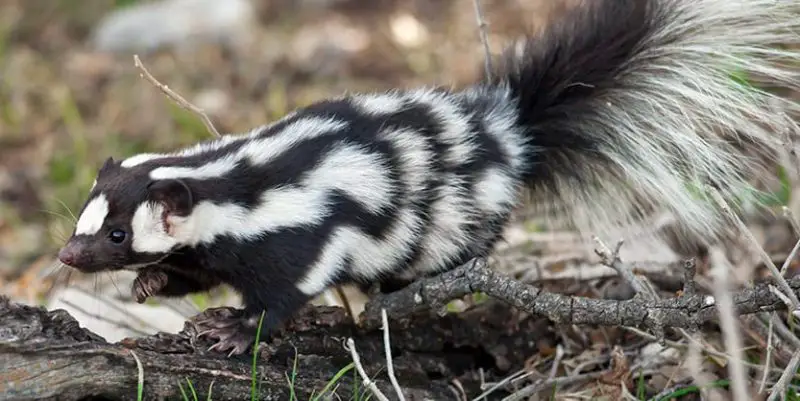
Characteristics of the Eastern Spotted Skunk
The Eastern Spotted Skunk (Spilogale putorius) is much rarer than the striped skunk in Indiana, with its population significantly reduced in recent decades. This species is smaller and more agile, weighing only 1 to 3 pounds on average and measuring around 14 to 22 inches in length.
Unlike the striped skunk, the spotted skunk has a distinctive coat pattern featuring broken white spots and stripes across its black fur. This gives it a mottled appearance, which provides excellent camouflage in forested and brushy environments. Its tail is bushy, with a mixture of black and white hairs.
The spotted skunk is sometimes mistaken for a young striped skunk, but its smaller size and unique markings help in proper identification. It is also known for its remarkable agility, capable of climbing trees and performing handstands as part of its defensive behavior.
Behavior of the Eastern Spotted Skunk
The Eastern Spotted Skunk shares many behavioral traits with the striped skunk, such as nocturnal foraging and an omnivorous diet. However, it is more secretive and elusive, making it harder to observe in the wild. It primarily consumes insects, small vertebrates, berries, and carrion, but it adapts its diet seasonally depending on availability.
One of the most distinctive behaviors of this species is its handstand display when threatened. By balancing on its forelegs with its tail raised, the spotted skunk warns predators before spraying. This acrobatic defense mechanism sets it apart from other skunks in Indiana and makes it a fascinating subject of wildlife observation.
Breeding in spotted skunks typically occurs in late winter, with delayed implantation resulting in spring births. Females give birth to litters of two to six kits, raising them in secluded dens until they are old enough to venture out.
Habitat of the Eastern Spotted Skunk in Indiana
The Eastern Spotted Skunk has a more restricted range in Indiana compared to its striped cousin. Historically, it was widespread across the state, but habitat loss, pesticide use, and hunting pressure have contributed to its decline. Today, it is considered uncommon and is more likely to be found in southern Indiana in forested or brushy areas.
This species prefers dense vegetation, wooded slopes, and farmlands with hedgerows, which provide cover and food sources. Unlike striped skunks, spotted skunks are skilled climbers and may take refuge in hollow trees or logs in addition to underground dens.
Conservation efforts are underway to monitor and protect remaining populations of Eastern Spotted Skunks. Their decline highlights the importance of maintaining diverse habitats that support not only skunks but also many other wildlife species across Indiana.
Comparing Striped and Spotted Skunks in Indiana
Although both skunks share common traits, their differences make them relatively easy to distinguish. Striped skunks are larger, more widespread, and more commonly seen throughout Indiana, while spotted skunks are smaller, rarer, and more secretive. Their contrasting coat patterns provide the clearest visual identification, with bold stripes versus spotted markings.
Behaviorally, striped skunks are less agile and more ground-dwelling, while spotted skunks exhibit greater climbing ability and unique defensive displays. Habitat preferences also differ slightly, with striped skunks more tolerant of human presence and spotted skunks favoring denser, less disturbed environments.
These differences emphasize the diversity within Indiana’s wildlife and highlight why it is important to study and conserve both species. By recognizing the roles skunks play in controlling pest populations and contributing to ecological balance, residents can better appreciate these often misunderstood mammals.
Best Time and Places to See Skunks in Indiana
Skunks are primarily nocturnal, so the best time to observe them is at dusk or during the early hours of the night. Spring and summer provide the most activity, as both striped and spotted skunks forage widely in search of food. Winter sightings are less frequent due to reduced activity, but skunks may still be encountered on warmer nights.
In Indiana, striped skunks can be seen throughout the state in both rural and suburban settings. Farmlands, woodland edges, and grassy fields provide prime opportunities for observation. Spotted skunks, on the other hand, are much harder to find and typically require visits to southern or more remote habitats.
Wildlife refuges, nature preserves, and state parks often offer the best chances of encountering skunks safely. Observers should maintain a respectful distance, as startling a skunk can result in defensive spraying. Using binoculars or trail cameras is an excellent way to enjoy watching these mammals without disturbing them.
FAQs About Skunks in Indiana
Are skunks dangerous to humans in Indiana?
Skunks are not inherently dangerous, but they can spray if threatened, which causes discomfort and a lingering odor. They may also carry rabies, so caution and distance are recommended.
How can you identify a skunk den?
Skunk dens are often found under decks, porches, or burrows in the ground. Look for small holes about 6 to 10 inches in diameter and evidence of digging with strong odor nearby.
Do skunks hibernate in Indiana?
Skunks do not fully hibernate but enter a state of torpor during the coldest months. They may remain in dens for extended periods yet occasionally emerge on warmer winter nights.
What should you do if a skunk sprays near your home?
If a skunk sprays, the odor can linger for days. Ventilating the area, using odor-neutralizing products, and washing surfaces with vinegar or baking soda solutions can help reduce the smell.
Why are Eastern Spotted Skunks rare in Indiana?
Their decline is due to habitat loss, changes in farming practices, and historical hunting pressure. Conservation efforts are ongoing to support their survival.
Conclusion
Skunks in Indiana are fascinating mammals that deserve more appreciation than they often receive. The Striped Skunk, common and adaptable, thrives across the state, while the Eastern Spotted Skunk, rare and secretive, represents an important yet vulnerable part of Indiana’s wildlife. Both species provide essential ecological benefits by controlling insects and small rodents, making them valuable contributors to natural balance.
By learning about the two types of skunks in Indiana, residents and visitors can better understand their behaviors, habitats, and significance. Respectful observation and habitat conservation will ensure these unique mammals continue to thrive in the Hoosier State for generations to come.




